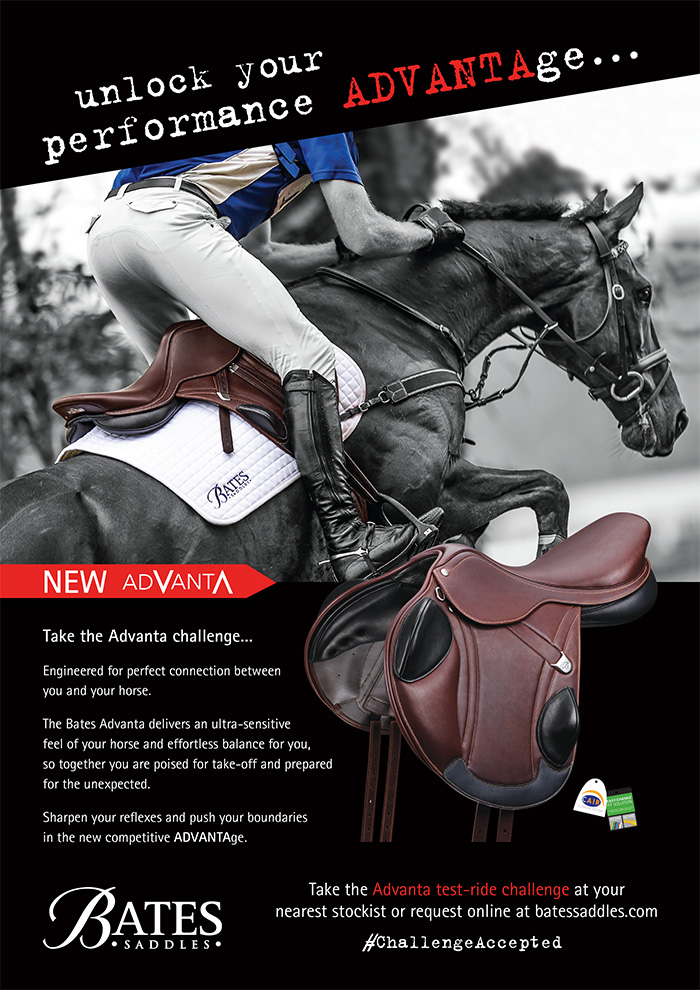An Eventing Clinic with Shane Rose

Shane Rose is one of the most thoughtful of Australia’s eventing riders, and it is always great to sit down with him and talk about training. Shane is legendary for his ability to ride tight lines and shave the time cross country. Here he talks about a trial using satellite monitors produced some interesting results. According to Shane:
“The NSW Institute of Sport Equine Program did a study at Werribee where they put satellite monitors on eight horses in the three-star. Unfortunately only half of them worked, but the results were still interesting. They tracked the distances covered, and the speeds the horses were traveling. It was really interesting to look at the difference between Emma Scott and Chris Burton – Chris was a second under the time, and Emma was three seconds over the time, Emma’s average speed and maximum speed were massively quicker than Chris Burton’s yet Chris was the one who was faster. If you looked at the actual distance traveled, Chris traveled 300 metres less than what Emma had done.”
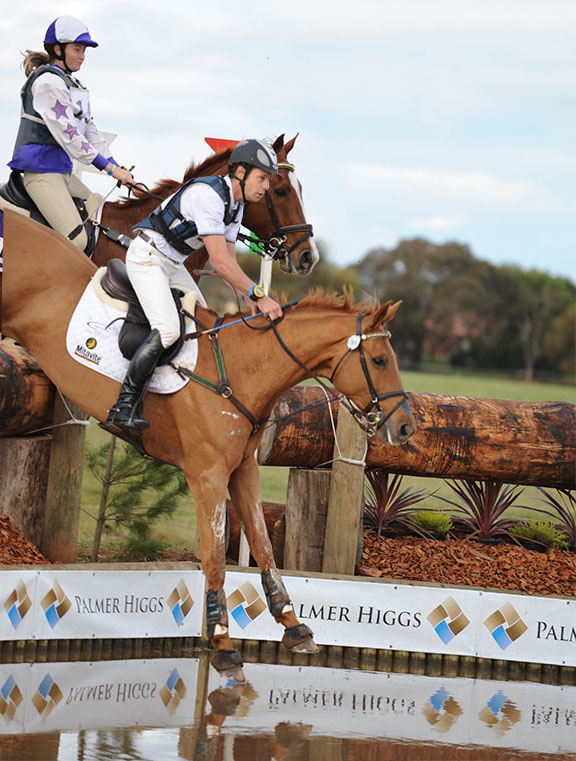
Emma’s average speed and maximum speed were massively faster than Chris Burton’s, yet Chris had the faster time on course…
“If you are walking the course with a wheel and thinking about where you are going to ride it, if you are out by 100 metres, you start again – and yet the study found three times as much difference in distance covered between two riders who had fairly similar time. It’s another tool we can use to improve how we ride…”
“You’ve got to take that information and ask the questions: is Emma’s horse sufficiently schooled to turn up those tight distances? What’s the risk and reward related to shaving a few metres off the track if your horse can gallop really well? The speed and the distance aren’t the only factors in getting quick, but it is certainly a massive tool we can use to take us forward.”
more on making the time follows
“And the way the courses are going, there’s going to be less galloping space. When you have a course like Burghley shortened to ten minutes, there is less distance between the fences, so there are things we need to be able to do. One is to jump out of a rhythm, get your horse more balanced and not waste time setting up before and after fences – that saves energy and massive amounts of time.”
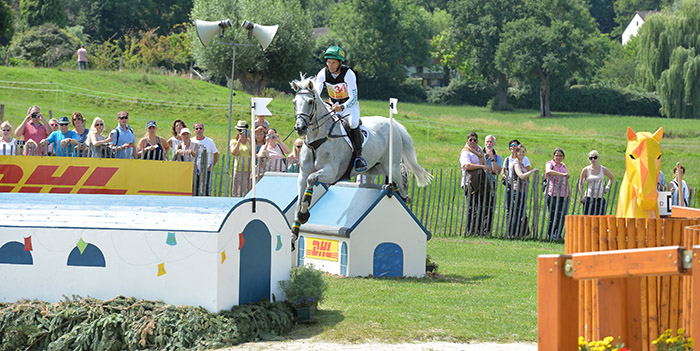
Shane and Qualified being economical at in the CIC Aachen
“Over ten years ago, Denis Goulding said to me, if you can save a second a fence, that’s 30 seconds on a course. Realistically you are probably not going to manage that, but I’ve always had that mind set – if I can be more economical before and after fences without interfering with my horse’s ability to see and read and jump the fence, that’s a way for me to go quicker without having to gallop as hard. So that’s what we are going to be working on with Emma and her three-star horse, Mustang, trying to get her to be more economical in firstly re-balancing her horse, but also in the lines she can take while making sure the horse still has the time to read it.”
“When you are looking at a fence, you can ride it in several different ways. And which is the quicker way, depends on the track. If you’ve got to jump and turn back on yourself, then quite often it is quicker to put more strides in front of the fence if it brings you back on your line better than if you go in a straight line where you end up with all this momentum traveling in the wrong direction. Conversely if you can take strides out in a more direct line and the course allows you to gallop on and save time, that’s the better option. You’ve got to think about it when you walk the course, if I take a second or two longer in front of the fence, is it going to be quicker in the long run?”
“At home what we try and do is school every option, so when we go to a competition we have the ability to do either. You see a fence and you know you can ride it any way you want, so you pick the best line for the situation. At the Olympic Games in Hong Kong, on the Snake Fence, there were very acutely angled rails and it was set up on one and a half strides. More often that not, in that sort of situation, I’d be doing two strides, but when I walked it, and the more we walked it, the more we realized time was going to be extremely hard to make, and in the end I decided to go on that very acute angle and stay straight and do one stride. That is a situation where 90% of the time, I’d be jumping with just a very slight curve and doing two strides on All Luck, he’s very adjustable like that, but because I’ve trained him the other way, I had the option to do both.”
And luckily for us, and luckily for Emma Scott, she is working for Shane and he was able to demonstrate exactly what he was talking about in a lesson with Emma (riding Statford Demarco as Mustang is having a little time out after Werribee) using the fences in Shane’s cross country paddock and his favorite new toy, a little front end loader.
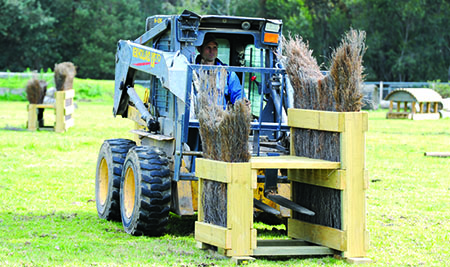
The lesson:
For the exercise Shane asked Emma to ride three brush skinnies, two different ways – first on a slightly bended line in five strides, then the straighter more direct option, in four.
First the curved line in five strides
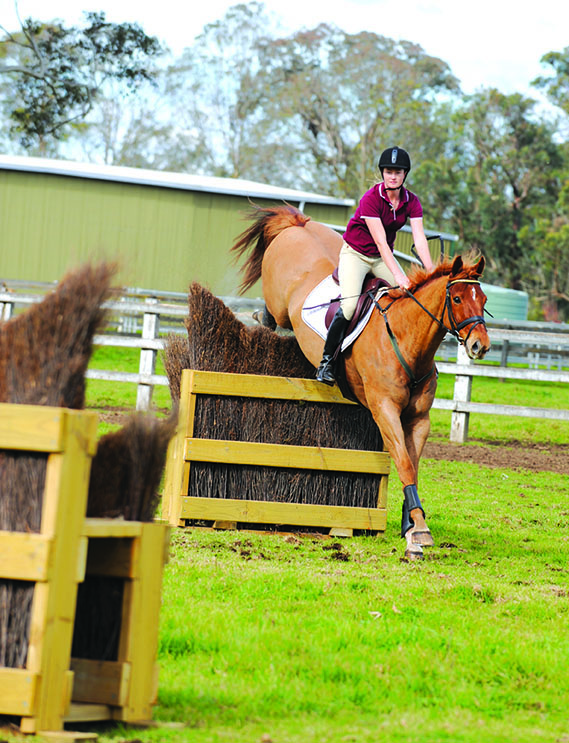
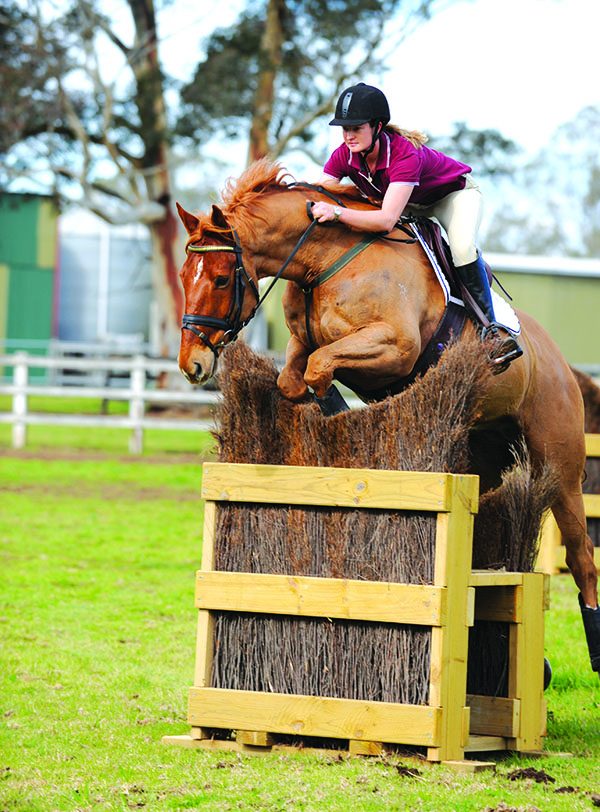
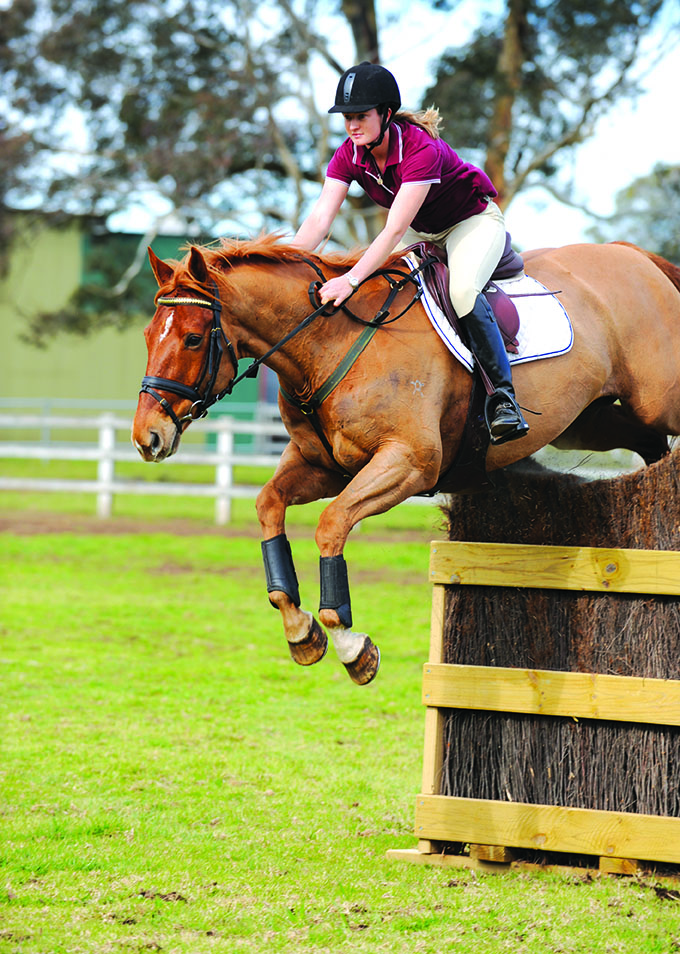
“More often than not, the five strides is the safer way, jumping each fence square, it takes a little more time, and if you are going to the left, or straight on after the fence it is slower, safe, but you are wasting a second or two at that fence. For example at Werribee, you’ve got the two narrow stumps on three and a half strides where you are turning back on yourself. In that situation it would be quicker to take more strides because you don’t want to have momentum because then you’ve got to slow down, re-gather, not slip over on the turn because if you slip on the turn now you are eliminated – all that takes a lot more time…. But if you ride it like Emma did in this exercise with the five strides, you can make that turn easily.”
Now the straight way, fine for one and three…
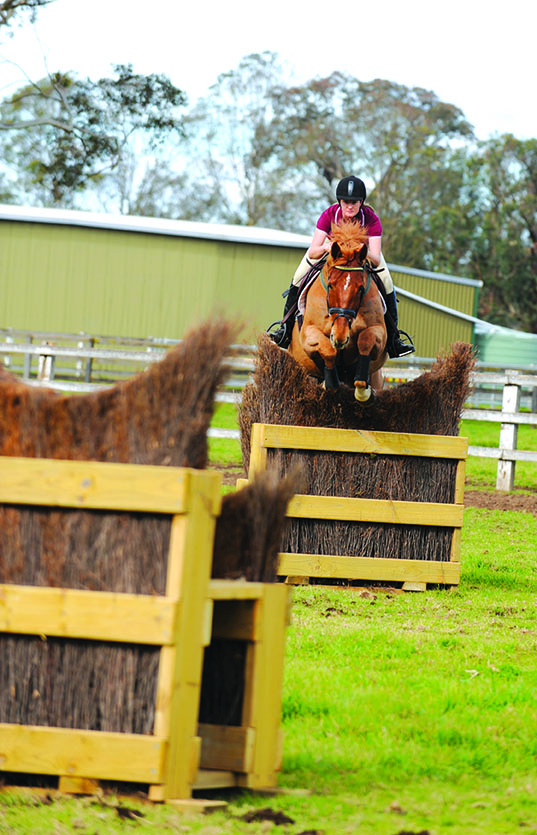
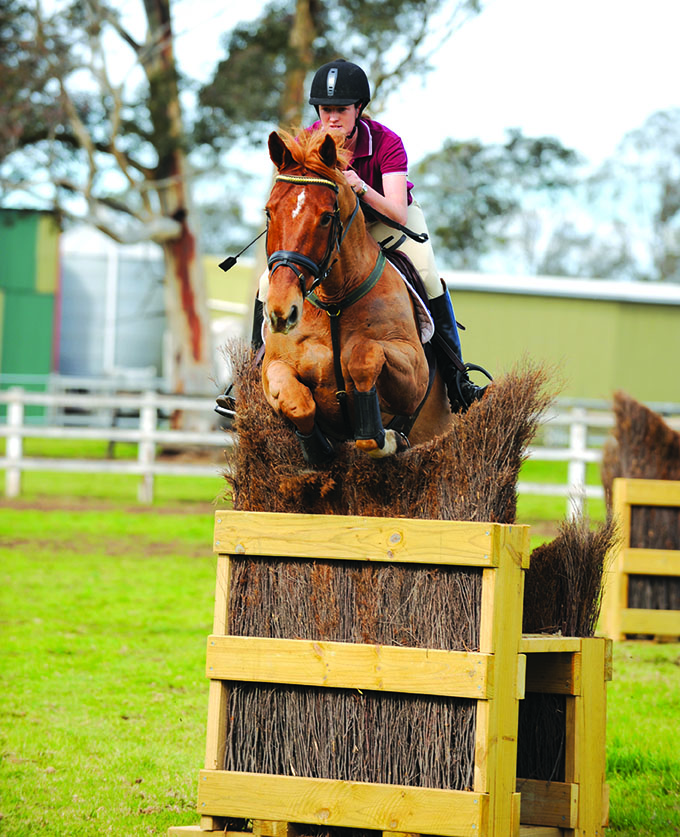
“Most times you are not turning back, so you go a little wider before the first fence, jumping across the first fence on an angle, which adds a little risk, direct line in four strides, jumping across the second fence on an angle, which again adds more risk, as we saw today, it’s the first time Emma has jumped this horse, and she got slightly off her line and the horse jumped to the outside of the fence. She schooled that, got the horse straight and the second time she got focused on the fence and the horse jumped straight, and that way is a lot quicker if you are galloping off on a straight line, or turning off to the left.”
But easy to miss too
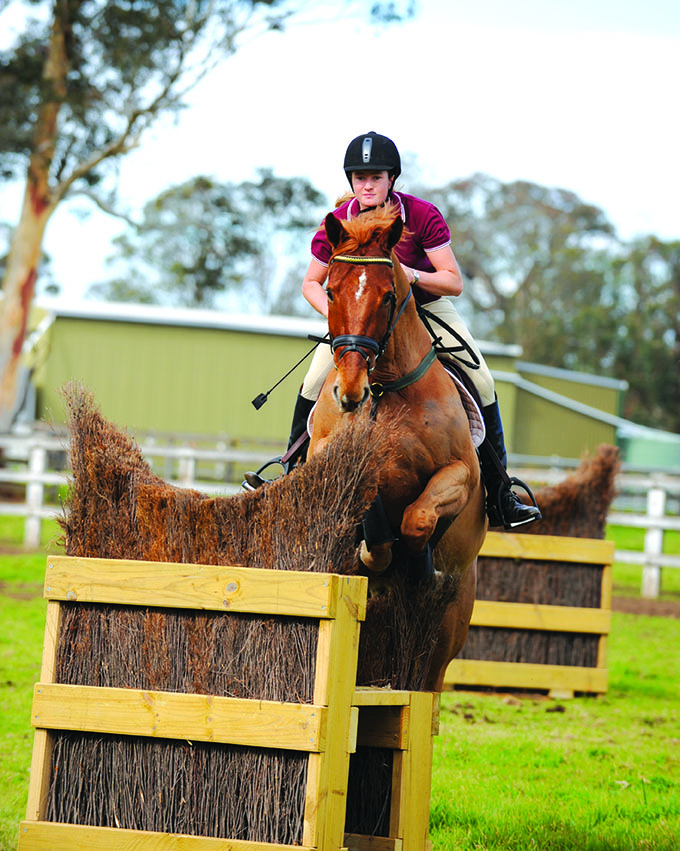
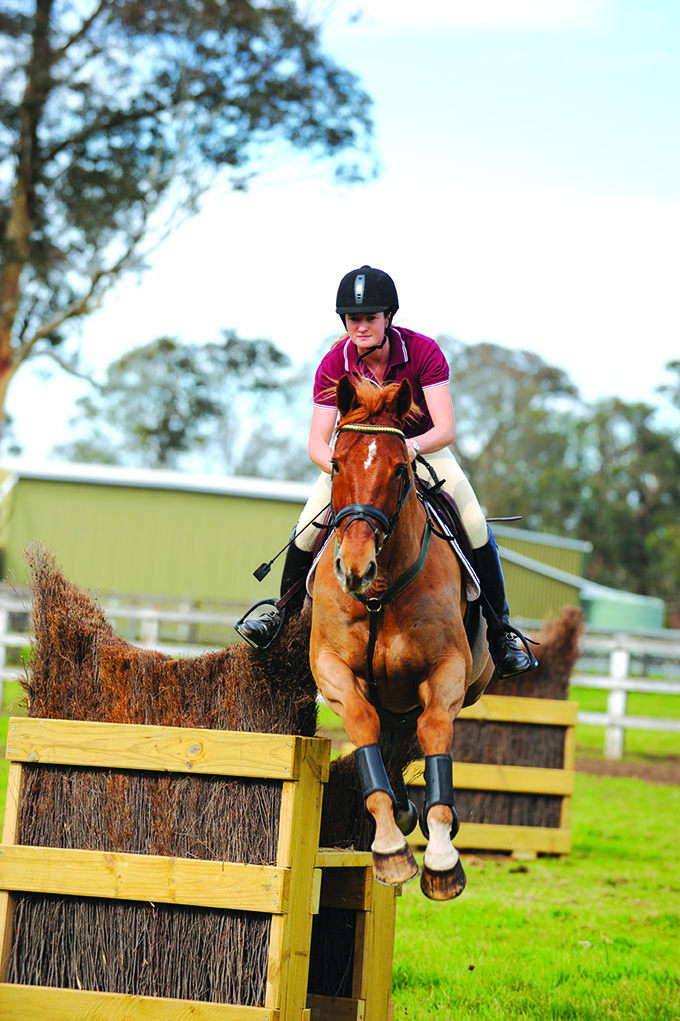
“When we school we don’t have flags on the fence, which makes it harder. If you jump a 44 gallon drum at home, it is very narrow, and there is nothing holding you on – when we go to a competition, the fence has a flag on either side, and it is almost like putting a frame around a photo. A photo without a frame, just looks like a photo whereas put on a frame and you go, wow, that’s magnificent. It’s the same concept for the horse, the flags – especially on that type of fence, a skinny – gives it a bracket for them to funnel through.”
“To ride effectively you have to have the horse pliable and responsive. If you are galloping along and you feel your horse is just a little against you, a little wooden or unresponsive, you don’t have to do a lot, but just ‘hey listen to this’, bend your neck or in your gallop do something to re-focus the horse and get it to concentrate on what is happening. Often when you go to an event and there is a scary fence, someone will give their horse a slap on the shoulder, ‘come on, let’s get brave’ – it’s the same thing, but just a more subtle approach, just a bend, come on, listen to me and concentrate. Quite often people underestimate how effective that little subtle move can be as opposed to the easy option, the slap on the shoulder. The slap quite often gets the horse and the rider revved up, but quite often that is not what we want, we want the horse more chilled, a little more response, so when you go to make a turn, it’s easy.”
And as Shane keeps pointing out, keeping it simple, keeping it easy, is the name of the game…
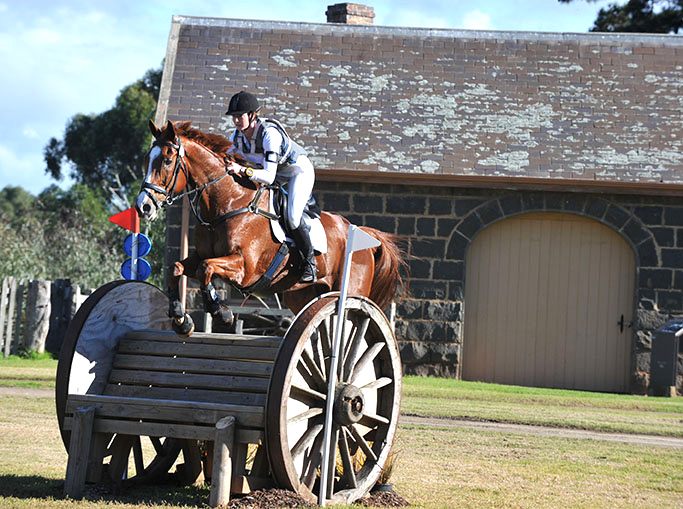
Emma Scott:
“We are still a bit green at three-star, but he is very honest. I just love telling people that we bred Mustang, and he has been in the family all the time, he’s a very special horse.”
That was an interesting exercise you were doing today…
“Getting to ride accurately is always helpful. It was surprising the results at Werribee with Chris Burton and me, it really gives us something to work with – trying to ride lines better, and find ways to shorten that distance up. Shane’s fabulous because he is really easy to talk with and he explains things really well – it’s always very correct, I’m really lucky to get help from him.”
Breeding jumpers? International Horse Breeders has a range of Europes best available here in Australia, including Chacoon Blue, carrying the lines of the great Chacco Blue – go to www.ihb.com.au
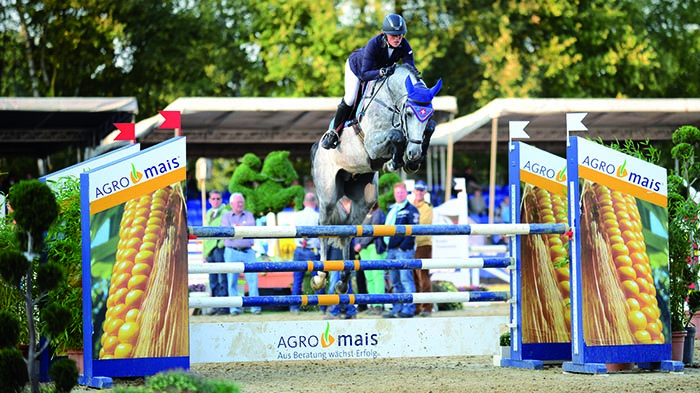 Like Chacoon Blue
Like Chacoon Blue



